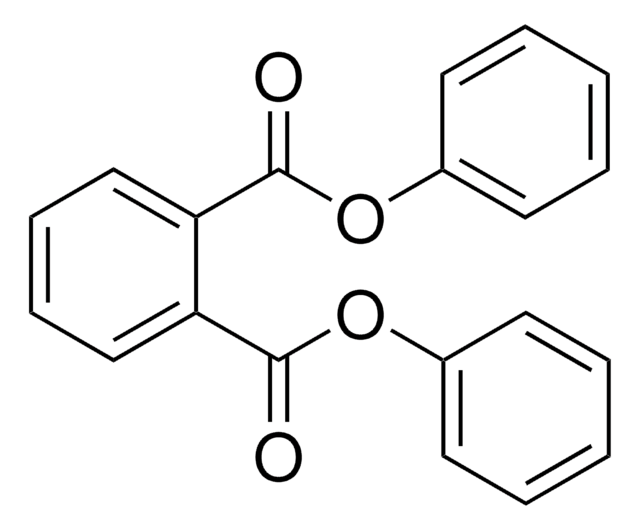77531
Tralkoxydim
certified reference material, TraceCERT®, Manufactured by: Sigma-Aldrich Production GmbH, Switzerland
About This Item
Produits recommandés
Qualité
certified reference material
TraceCERT®
Niveau de qualité
Gamme de produits
TraceCERT®
Durée de conservation
limited shelf life, expiry date on the label
Fabricant/nom de marque
Manufactured by: Sigma-Aldrich Production GmbH, Switzerland
Format
neat
Température de stockage
2-8°C
Chaîne SMILES
CCO\N=C(/CC)C1=C(O)CC(CC1=O)c2c(C)cc(C)cc2C
InChI
1S/C20H27NO3/c1-6-16(21-24-7-2)20-17(22)10-15(11-18(20)23)19-13(4)8-12(3)9-14(19)5/h8-9,15,22H,6-7,10-11H2,1-5H3/b21-16+
Clé InChI
DQFPEYARZIQXRM-LTGZKZEYSA-N
Vous recherchez des produits similaires ? Visite Guide de comparaison des produits
Description générale
Certified content by quantitative NMR incl. uncertainty and expiry date are given on the certificate.
Download your certificate at: http://www.sigma-aldrich.com
Tralkoxydim is a selective and systemic herbicide that belongs to the group of cyclohexanedione oximes. It is an acetyl CoA carboxylase (ACCase) inhibitor that prevents the incorporation of acetate into fatty acids and blocks the production of phospholipids used in building new membranes. Tralkoxydim is used for post-emergence control of annual grass weeds including Avena spp., Lolium spp., Setaria viridis, Phalaris spp., Alopecurus myosuroides, and Apera spica-venti in wheat and barley.
According to the Commission Implementing Regulation (EU) No 540/2011 of 25th May 2011, tralkoxydim is not approved for use in the European Union (EU) as a plant protection agent, following the Regulation (EC) No. 1107/2009. But default maximum residue levels of 0.01 mg/kg to 0.05 mg/kg have been set for the presence of tralkoxydim (measured as the sum of its constituent isomers) in products of plant and animal origin, according to the EU Reg. No 2016/1015.
Application
Tralkoxydim CRM may also be used as given below:
- Evaluation of 252 pesticides extracted from surface water samples by solid-phase extraction (SPE) using liquid chromatography quadrupole-orbitrap high-resolution tandem mass spectrometry
- Extraction of 250 pesticide residues by QuEChERS method from 103 processed fruit samples and their analysis by ultra-high performance liquid chromatography-tandem mass spectrometry (UHPLC-MS/MS)
- Screening of 448 pesticide residues in 10 samples of fruits and vegetables by a semiautomated method based on ultrahigh-performance liquid chromatography coupled with electrospray ionization quadrupole-Orbitrap high-resolution mass spectrometry (UHPLC/ESI Q-Orbitrap)
- Development of a semi-automated method for the analysis of 261 pesticides and 41 environmental contaminants in catfish muscle samples by QuEChERS sample extraction and low-pressure GC-MS/MS and UHPLC-MS/MS, following an automated robotic micro-SPE clean-up
- Screening and quantification of 569 pesticides in honeysuckle samples by a combination of ultrahigh-performance liquid chromatography (UHPLC) and quadrupole-Orbitrap high-resolution mass spectrometry
- Analysis of 260 pesticides in high water content fruit and vegetables by liquid chromatography-tandem mass spectrometry (LC-MS/MS)
Produits recommandés
Informations légales
Vous ne trouvez pas le bon produit ?
Essayez notre Outil de sélection de produits.
Mention d'avertissement
Warning
Mentions de danger
Conseils de prudence
Classification des risques
Acute Tox. 4 Oral - Aquatic Chronic 2 - Carc. 2
Code de la classe de stockage
11 - Combustible Solids
Classe de danger pour l'eau (WGK)
WGK 3
Point d'éclair (°F)
Not applicable
Point d'éclair (°C)
Not applicable
Faites votre choix parmi les versions les plus récentes :
Certificats d'analyse (COA)
Vous ne trouvez pas la bonne version ?
Si vous avez besoin d'une version particulière, vous pouvez rechercher un certificat spécifique par le numéro de lot.
Déjà en possession de ce produit ?
Retrouvez la documentation relative aux produits que vous avez récemment achetés dans la Bibliothèque de documents.
Notre équipe de scientifiques dispose d'une expérience dans tous les secteurs de la recherche, notamment en sciences de la vie, science des matériaux, synthèse chimique, chromatographie, analyse et dans de nombreux autres domaines..
Contacter notre Service technique


